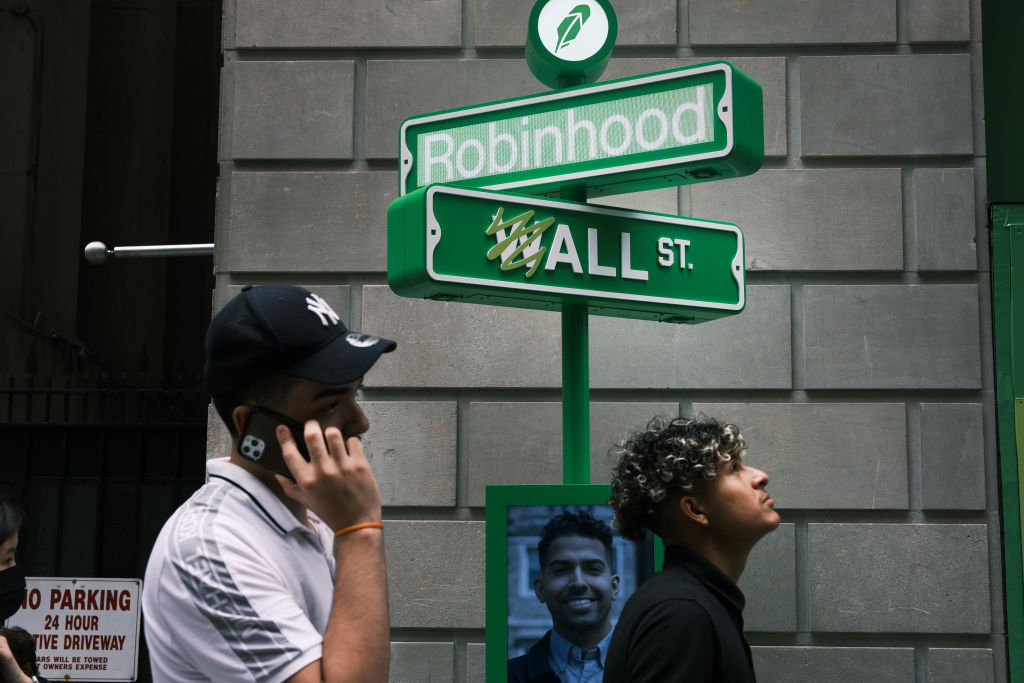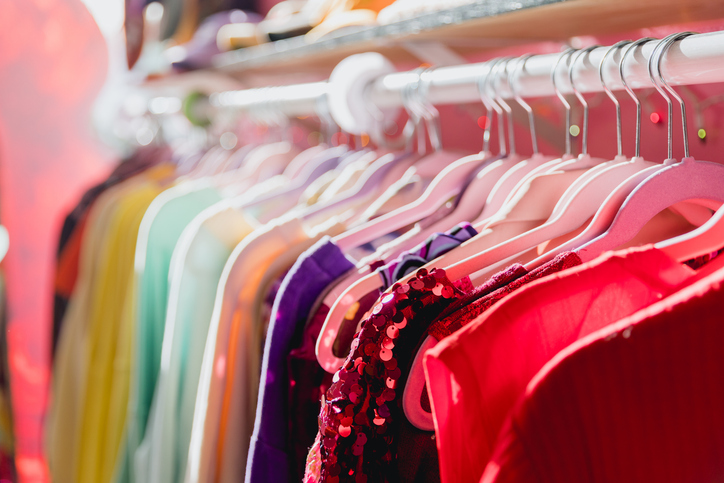Should You Be Buying What Robinhood Is Selling?
The popular trading app isn’t the first to sell a piece of itself to its own customers.
This week’s initial public offering of Robinhood Markets Inc., HOOD 50.41% parent of the wildly popular trading app, isn’t just one of the most talked-about IPOs of 2021. It’s the latest in a long series of pitches to everyday investors: Share in your broker’s wealth by buying shares in your broker.
In rare cases, such pitches have paid off big time. More often, you’d have done yourself a favour by taking roughly half your money and lighting it on fire instead.
Just as Robinhood isn’t the first brokerage to offer commission-free trading, it isn’t the first to seek to “democratize” investing or to sell a piece of itself to its own customers.
On June 23, 1971, Merrill Lynch, Pierce, Fenner & Smith Inc. became the first New York Stock Exchange firm catering to individual investors to offer its shares to the public.
Thirsty for fresh capital in a struggling stock market, Merrill flogged its shares to its own customers, tapping the firm’s “awesome recognition among that vast segment of the population,” reported The Wall Street Journal the next day. “Primarily small investors, the type long championed by Merrill Lynch, quickly purchased the entire amount.”
Nearly 400 insiders at the firm unloaded a total of 2 million shares in the offering. From its initial $28 per share, the stock shot to about $42—a 50% pop—then closed around $39. That valued Merrill at 30.5 times its prior-year earnings, much higher than the overall stock market’s price/earnings ratio of 18.7.
Less than three weeks later, Merrill announced that its net earnings had fallen nearly 50% from the prior quarter.
For the rest of 1971, Merrill’s stock lost 9.4%; the S&P 500 gained 4%, counting dividends.
In 1972, when the S&P 500 rose nearly 19%, Merrill sank 7.7%. And in 1973-74, when the S&P 500 lost 37%, Merrill’s stock slumped by 61%. In its first three full years, Merrill’s stock lost three-quarters of its value; the S&P 500 fell only 5%.
Here in 2021, Robinhood’s offering is one of several trading and investing IPOs: Coinbase Global Inc., the cryptocurrency exchange, went public in April, and Acorns Grow Inc., which helps users invest in tiny increments, said in May that it expects to go public later in the year. Since its Apr. 14 debut, Coinbase is down about 27%. Robinhood fell 8% on its first day of trading Thursday.
One of Wall Street’s oldest and frankest sayings is “When the ducks quack, feed ‘em”—meaning that whenever investors are eager to buy something, brokers will sell it like mad.
Back in 1971, that was the brokers’ own shares. Roughly half a dozen major firms sold stock to the public soon after Merrill, including Bache & Co. and Dean Witter & Co. By 1974, according to data from the Center for Research in Security Prices LLC, several of them had dealt losses at least as devastating as Merrill’s.
In 1987, Jane and Joe Investor got invited to join in on the fun of Charles Schwab Corp.’s IPO, when roughly three million of the offering’s eight million shares were reserved for employees and customers of the firm.
Unlike Merrill, which was rescued from the brink of failure in 2008 when Bank of America Corp. agreed to buy the firm, Schwab went on to generate spectacular long-term performance. Over the full sweep of time since its 1987 IPO, Schwab is up more than 26,500%, or 17.9% annualized. The S&P 500 gained less than 3,500%, or an average of 11.3% annually.
However, Schwab went public in late September 1987. Only 18 trading days later, on Oct. 19, the U.S. stock market took its biggest one-day fall in history, plunging more than 20%.
Schwab’s stock got brutalized. In their first year, Schwab’s shares fell 59.1%. After three years, the market as a whole had gained 0.6% annually; Schwab’s stock lost an annualized average of 6.9%, according to CRSP.
How many of the original buyers in 1987 stuck around long enough to reap the giant rewards that came much later? That’s impossible to know, but the likeliest answer has to be: very few.
Every once in a while, outside investors in a brokerage IPO do well.
Goldman Sachs Group Inc. began trading on May 4, 1999. If you’d bought Goldman stock in the IPO and held it ever since, you’d have earned 9.1% a year, versus 7.6% in the S&P 500, according to FactSet.
Yet Goldman was a giant then, as it is now; it was late to the IPO party because it had held on to its partnership structure for so many years. Most brokerage IPOs, like Robinhood’s, occur when the firms are younger and smaller.
That makes them typical. Companies selling shares to the public for the first time tend to be small, with minimal profits; they also require additional invested capital to sustain their rapid growth.
That’s what Savina Rizova, global head of research at Dimensional Fund Advisors, an asset manager in Austin, Texas, calls “a toxic combination of characteristics that points to low expected returns.”
On average, IPOs have severely underperformed seasoned stocks in the long run. And, history suggests, brokerages doing IPOs are better at timing the market for themselves than for you.
 Copyright 2020, Dow Jones & Company, Inc. All Rights Reserved Worldwide. LEARN MORE
Copyright 2020, Dow Jones & Company, Inc. All Rights Reserved Worldwide. LEARN MORE
This stylish family home combines a classic palette and finishes with a flexible floorplan
Just 55 minutes from Sydney, make this your creative getaway located in the majestic Hawkesbury region.
Continued stagflation and cost of living pressures are causing couples to think twice about starting a family, new data has revealed, with long term impacts expected
Australia is in the midst of a ‘baby recession’ with preliminary estimates showing the number of births in 2023 fell by more than four percent to the lowest level since 2006, according to KPMG. The consultancy firm says this reflects the impact of cost-of-living pressures on the feasibility of younger Australians starting a family.
KPMG estimates that 289,100 babies were born in 2023. This compares to 300,684 babies in 2022 and 309,996 in 2021, according to the Australian Bureau of Statistics (ABS). KPMG urban economist Terry Rawnsley said weak economic growth often leads to a reduced number of births. In 2023, ABS data shows gross domestic product (GDP) fell to 1.5 percent. Despite the population growing by 2.5 percent in 2023, GDP on a per capita basis went into negative territory, down one percent over the 12 months.
“Birth rates provide insight into long-term population growth as well as the current confidence of Australian families,” said Mr Rawnsley. “We haven’t seen such a sharp drop in births in Australia since the period of economic stagflation in the 1970s, which coincided with the initial widespread adoption of the contraceptive pill.”
Mr Rawnsley said many Australian couples delayed starting a family while the pandemic played out in 2020. The number of births fell from 305,832 in 2019 to 294,369 in 2020. Then in 2021, strong employment and vast amounts of stimulus money, along with high household savings due to lockdowns, gave couples better financial means to have a baby. This led to a rebound in births.
However, the re-opening of the global economy in 2022 led to soaring inflation. By the start of 2023, the Australian consumer price index (CPI) had risen to its highest level since 1990 at 7.8 percent per annum. By that stage, the Reserve Bank had already commenced an aggressive rate-hiking strategy to fight inflation and had raised the cash rate every month between May and December 2022.
Five more rate hikes during 2023 put further pressure on couples with mortgages and put the brakes on family formation. “This combination of the pandemic and rapid economic changes explains the spike and subsequent sharp decline in birth rates we have observed over the past four years,” Mr Rawnsley said.
The impact of high costs of living on couples’ decision to have a baby is highlighted in births data for the capital cities. KPMG estimates there were 60,860 births in Sydney in 2023, down 8.6 percent from 2019. There were 56,270 births in Melbourne, down 7.3 percent. In Perth, there were 25,020 births, down 6 percent, while in Brisbane there were 30,250 births, down 4.3 percent. Canberra was the only capital city where there was no fall in the number of births in 2023 compared to 2019.
“CPI growth in Canberra has been slightly subdued compared to that in other major cities, and the economic outlook has remained strong,” Mr Rawnsley said. “This means families have not been hurting as much as those in other capital cities, and in turn, we’ve seen a stabilisation of births in the ACT.”
This stylish family home combines a classic palette and finishes with a flexible floorplan
Just 55 minutes from Sydney, make this your creative getaway located in the majestic Hawkesbury region.






















